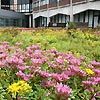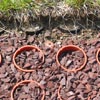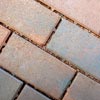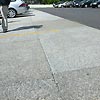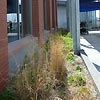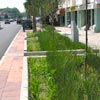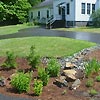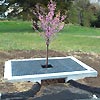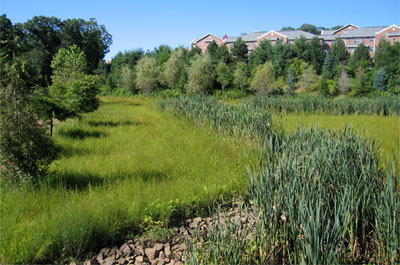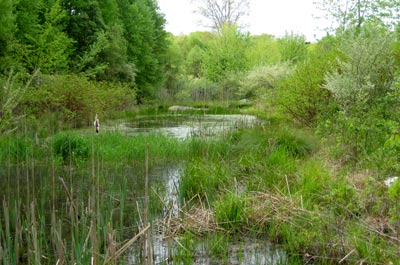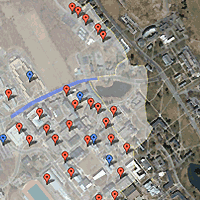
Step 4 - A triage system for impervious areas
Once the drainage pattern is understood and IC is mapped and designated as connected/disconnected, it’s time to focus on the connected IC. For each expanse of connected IC, a common-sense triage system to help determine retrofit options can be applied:
Remove/reduce the IC footprint, where possible
This option includes green roof retrofits, reducing the size of parking lots that are being underused, eliminating sidewalks that don’t make sense, etc. More often than not, though, this option translates to replacing traditional pavements with porous or permeable pavements such as pervious asphalt, pervious cement, or paver block systems designed to allow infiltration.
View Photo Galleries
Green Roofs Other Paving Pavers Pervious Asphalt Pervious Concrete
Disconnect IC through vegetated LID practices
This option is likely to comprise the majority of your retrofit options. Surprisingly, even in highly urbanized areas there are many opportunities to use LID “bioretention” practices that use vegetated cells to receive and treat stormwater. Options range from small “rain gardens” accepting roof runoff to large, linear “green streets” practices that process street runoff.
View Photo Galleries
Bioretention Green Streets Rain Gardens Tree Boxes
Treat runoff through water quality stormwater practices
Although IC provides the focus for the regulation, the end objective is to have a healthier aquatic ecosystem. Removal and disconnection of IC reduces the water quantity impacts of stormwater runoff, and typically provides water quality improvements through the natural processing of pollutants in the soil and by vegetation. However, in some cases, the nature of the site (soils, physical constraints, etc.) makes it unworkable to use LID practices. Also, in some cases there may be pollution sources unrelated to IC. In these cases, more water quality-oriented practices should be considered. Practices such as stormwater wetlands or ponds do not necessarily reduce water quantity impacts, but can help remove pollutants from the system.
Stormwater wetland, UConn Campus, Storrs, CT Stormwater wetland, Mystic Marriott, Mystic, CT

